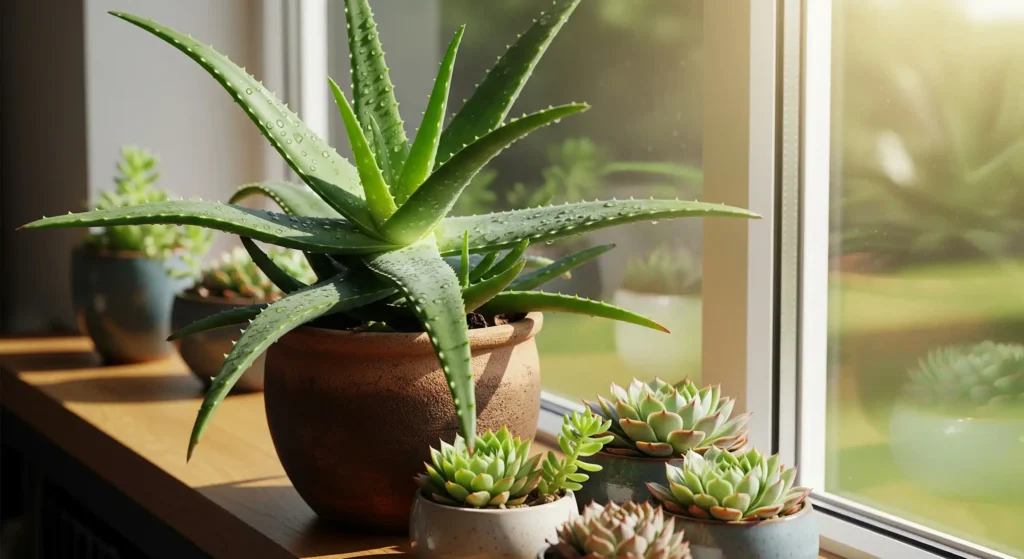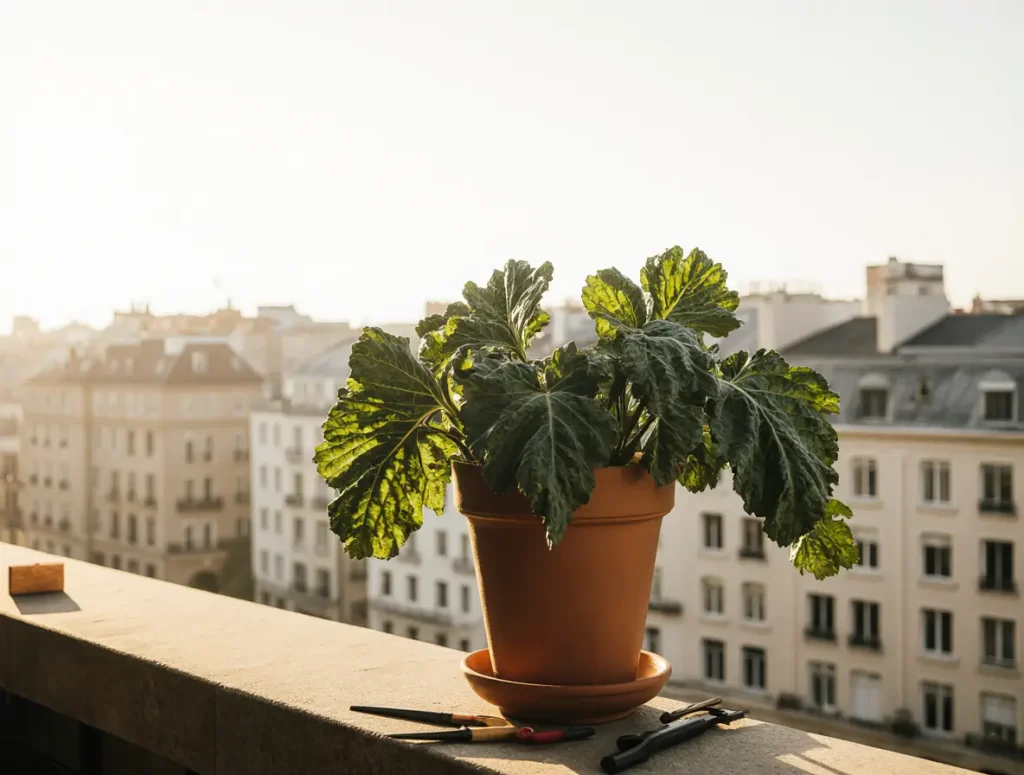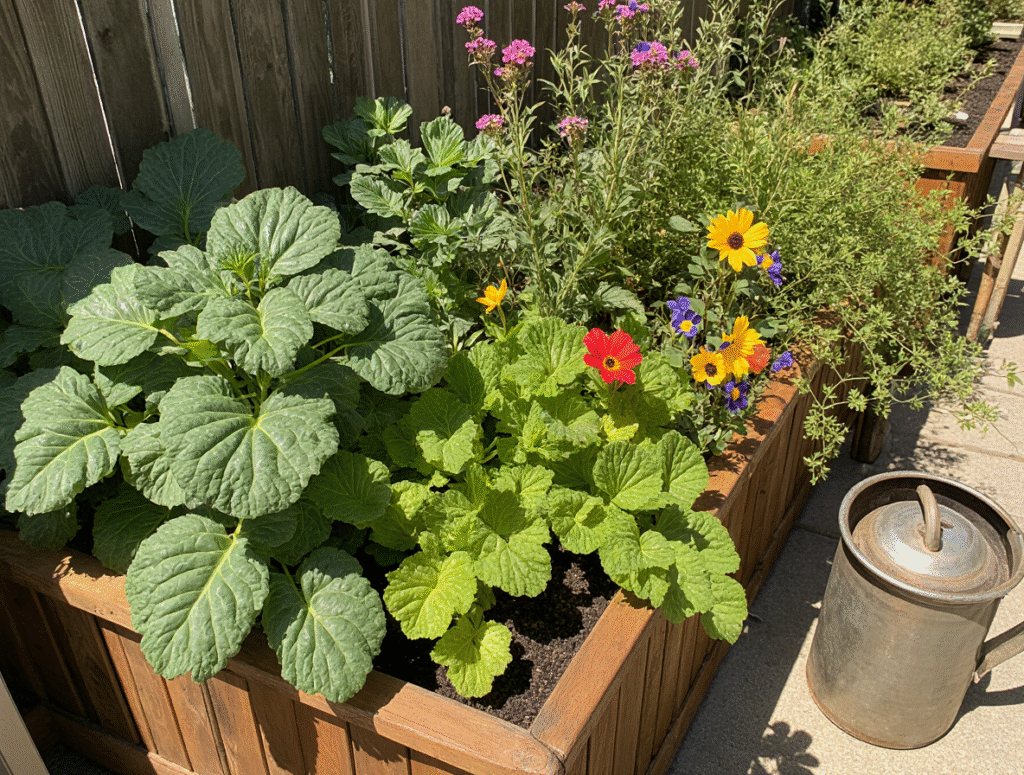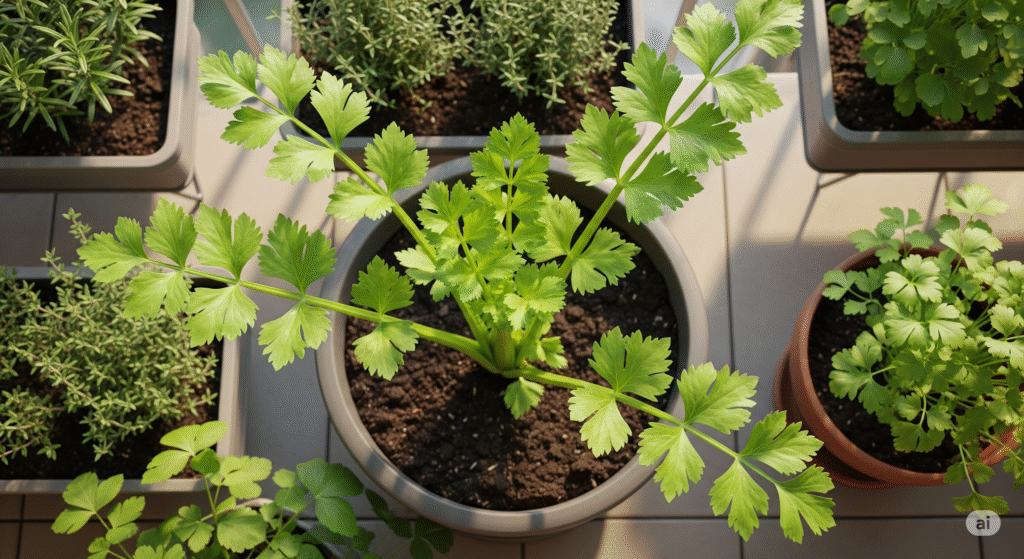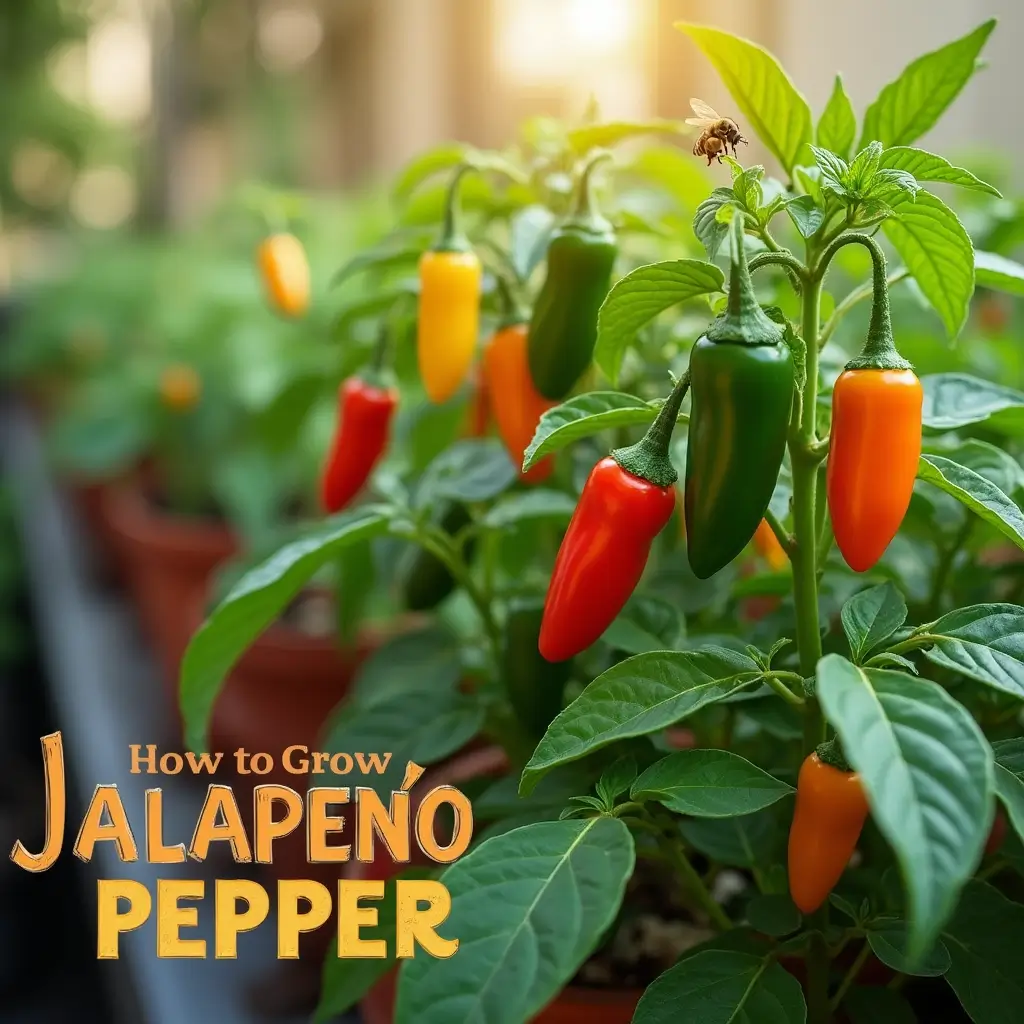
How to Grow Jalapeño Pepper: A Comprehensive Guide for Every Gardener
Jalapeño peppers are more than just a fiery addition to your meals—they’re a symbol of passion, resilience, and the joy of growing your own food. Whether you’re a seasoned gardener or a beginner looking to dip your toes into the world of chili cultivation, learning how to grow jalapeño pepper is an adventure worth embarking on. In this article, we’ll take you step-by-step through the process, ensuring you have all the tools and knowledge needed to succeed. Let’s dive in!
Why Growing Jalapeño Pepper Should Be Your Next Project
Think back to the first time you tasted a fresh jalapeño pepper. The heat that danced across your tongue, the crunch that signaled freshness—it was unforgettable, wasn’t it? Now imagine having that same experience with a jalapeño you grew yourself. There’s something magical about nurturing a plant from seed to harvest, knowing every step of its journey. Growing jalapeño pepper isn’t just about gardening; it’s about connecting with nature, adding flavor to your meals, and enjoying the satisfaction of self-sufficiency. So, let’s get started!
Understanding Jalapeño Peppers
What Makes Jalapeños Special?
Before diving into the “how,” it’s essential to understand what makes jalapeño peppers unique. These medium-heat chilies are versatile, ranging from 2,500 to 8,000 Scoville Heat Units (SHU), making them perfect for everything from salsas to stuffed recipes. Here’s why they deserve a spot in your garden:
- Versatility: Use them fresh, roasted, pickled, or dried.
- Health Benefits: Packed with vitamins C and A, plus capsaicin, which boosts metabolism.
- Easy to Grow: With the right conditions, jalapeños thrive even in small spaces.
Here’s a quick comparison table to help you see where jalapeños fit among other popular peppers:
Pepper Type | Heat Level (SHU) | Best Uses |
|---|---|---|
Jalapeño | 2,500–8,000 | Salsas, guacamole, stuffed |
Habanero | 100,000–350,000 | Hot sauces, marinades |
Serrano | 10,000–23,000 | Fresh salsas, garnishes |
Preparing to Grow Jalapeño Peppers
Choosing the Right Seeds or Seedlings
The foundation of success lies in selecting high-quality seeds or healthy seedlings. Here’s what you need to know:
- Seeds vs. Seedlings: If you prefer starting from scratch, go for seeds. For faster results, opt for seedlings.
- Varieties to Consider: Early Jalapeño, Mucho Nacho, and Tam Mild Jalapeño are excellent choices for beginners.
Selecting the Ideal Location
Jalapeños love sunlight and warmth, so choose a spot that gets 6–8 hours of direct sun daily. If space is limited, don’t worry—you can grow jalapeño pepper in containers as long as they’re at least 12 inches deep and well-draining.
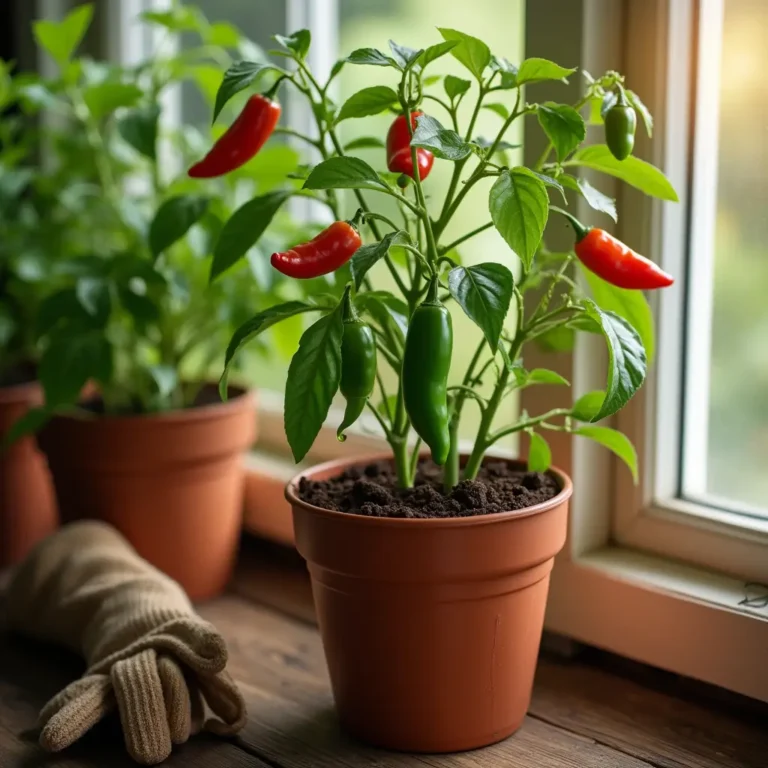
Planting Your Jalapeño Peppers
Step-by-Step Guide to Planting Jalapeños
Follow these steps to give your jalapeños the best start:
- Timing: Start seeds indoors 6–8 weeks before the last frost date in your area. This ensures strong, established plants when transplanting outdoors.
- Soil Preparation: Use rich, loamy soil with a pH between 6.0 and 7.0. Mix in compost or well-rotted manure for added nutrients.
- Spacing: Space plants 18–24 inches apart to allow room for growth. Proper spacing improves airflow and reduces disease risk.
- Transplanting: Harden off seedlings by gradually exposing them to outdoor conditions over 7–10 days before planting.
Caring for Your Jalapeño Plants
Proper care is the backbone of successful jalapeño pepper cultivation. Once your plants are in the ground or pots, consistent attention to watering, fertilizing, and maintenance will ensure a bountiful harvest. Here’s everything you need to know about how to grow jalapeño pepper with care that maximizes yield and minimizes stress.
Watering and Fertilizing Tips
Watering deeply but infrequently encourages deep root growth. Aim for about 1–2 inches of water per week, adjusting based on weather conditions. Overwatering can lead to root rot, so always check the top inch of soil before watering—if it feels dry, it’s time to water.
Fertilize every 4–6 weeks using a balanced fertilizer (e.g., 5-10-10 or 8-16-16). You can also use organic options like fish emulsion or liquid seaweed for a natural boost.
Pro Tip: Mulch around the base of your plants to retain moisture, suppress weeds, and regulate soil temperature.
Supporting Your Plants
As your jalapeños grow taller, they may need support to bear the weight of their fruits. Use stakes, cages, or trellises to keep branches upright. Additionally, pruning lower leaves improves airflow and reduces the risk of fungal diseases.
Common Challenges and Solutions
Even with the best intentions, challenges can arise. Here’s how to tackle them:
Identifying and Managing Pests and Diseases
Common Pests:
- Aphids: Tiny insects that suck sap from leaves. Spray with insecticidal soap or neem oil.
- Spider Mites: Cause stippling on leaves. Increase humidity and treat with miticides.
- Cutworms: Chew through stems at night. Protect young plants with collars made from cardboard or foil.
Common Diseases:
- Blossom-End Rot: Caused by calcium deficiency or inconsistent watering. Maintain steady moisture levels.
- Powdery Mildew: Appears as white patches on leaves. Improve airflow and apply fungicides if necessary.
Use the following table to identify issues quickly:
Problem | Symptoms | Solution |
|---|---|---|
Blossom-End Rot | Black spots on the bottom of fruits | Maintain steady watering |
Aphid Infestation | Sticky residue on leaves | Spray with insecticidal soap |
Powdery Mildew | White powdery coating on leaves | Increase airflow and treat with fungicide |
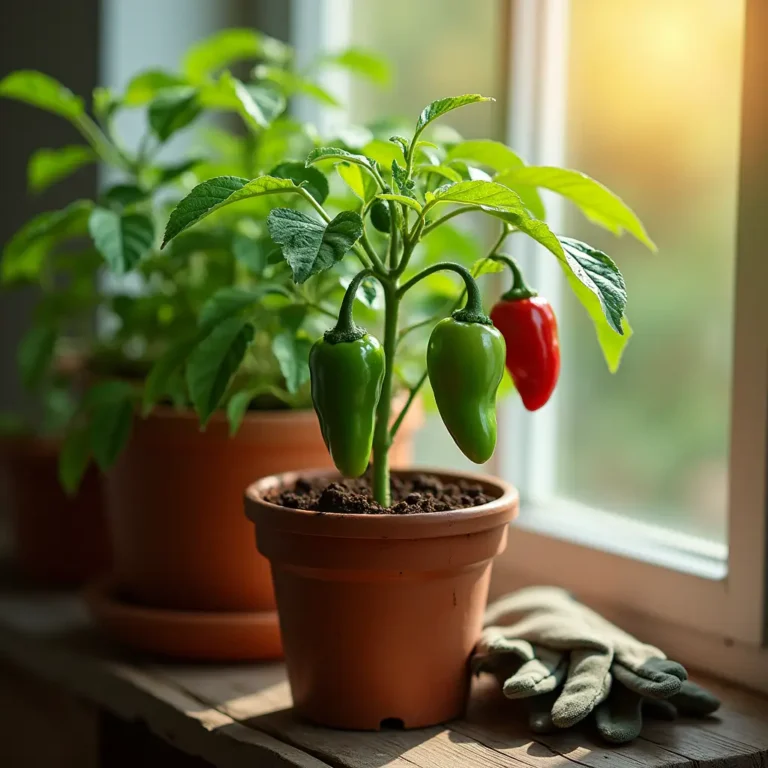
Harvesting Your Jalapeño Peppers
After months of care, it’s finally time to reap the rewards!
When and How to Harvest Jalapeños
Harvest jalapeños when they reach 2–3 inches in length and have a glossy green color. Leaving some peppers on the plant to ripen fully will result in sweeter, milder fruits. To avoid damaging the plant, use scissors or prunners to cut the stem rather than pulling the fruit off.
Fun Fact: The longer you leave jalapeños on the plant, the hotter they become due to increased capsaicin production.
Storing and Using Your Jalapeños
Now that you’ve harvested your crop, here’s how to preserve and enjoy it:
Preserving Your Homegrown Harvest
- Refrigeration: Store fresh jalapeños in the crisper drawer for up to two weeks.
- Freezing: Slice and freeze jalapeños for future use in soups, stews, or salsas.
- Drying: Hang peppers in a warm, dry place until fully dried, then grind into powder for seasoning.
Ideas for Usage:
- Make homemade hot sauce.
- Pickle jalapeños for a tangy snack.
- Roast and stuff them with cheese for a delicious appetizer.
FAQ Section
How do I know when my jalapeño peppers are ready to harvest?
Look for firm, glossy peppers that are 2–3 inches long. Green is the standard color, but leaving them on the plant longer will turn them red and sweeter.Why are my jalapeño plants dropping flowers?
Flower drop often occurs due to stress caused by inconsistent watering, extreme temperatures, or nutrient deficiencies. Ensure stable growing conditions and fertilize appropriately.Can I grow jalapeños in pots?
Absolutely! Choose a pot at least 12 inches deep with good drainage holes. Place it in a sunny location and follow regular watering and fertilizing practices.What makes a jalapeño pepper hot?
Capsaicin, a compound concentrated in the inner membranes and seeds, gives jalapeños their heat. Removing these parts reduces spiciness.How to grow jalapeño pepper indoors?
Provide adequate sunlight (or grow lights), maintain warmth (70°F–85°F), and ensure proper ventilation.
Conclusion
Growing jalapeño pepper is a rewarding experience that brings flavor, pride, and connection to your life. By following the steps outlined in this guide, you’ll be well-equipped to cultivate a thriving crop, whether in your backyard or on your balcony. So roll up your sleeves, grab your gardening tools, and let’s make those jalapeños flourish!
You Might Like

